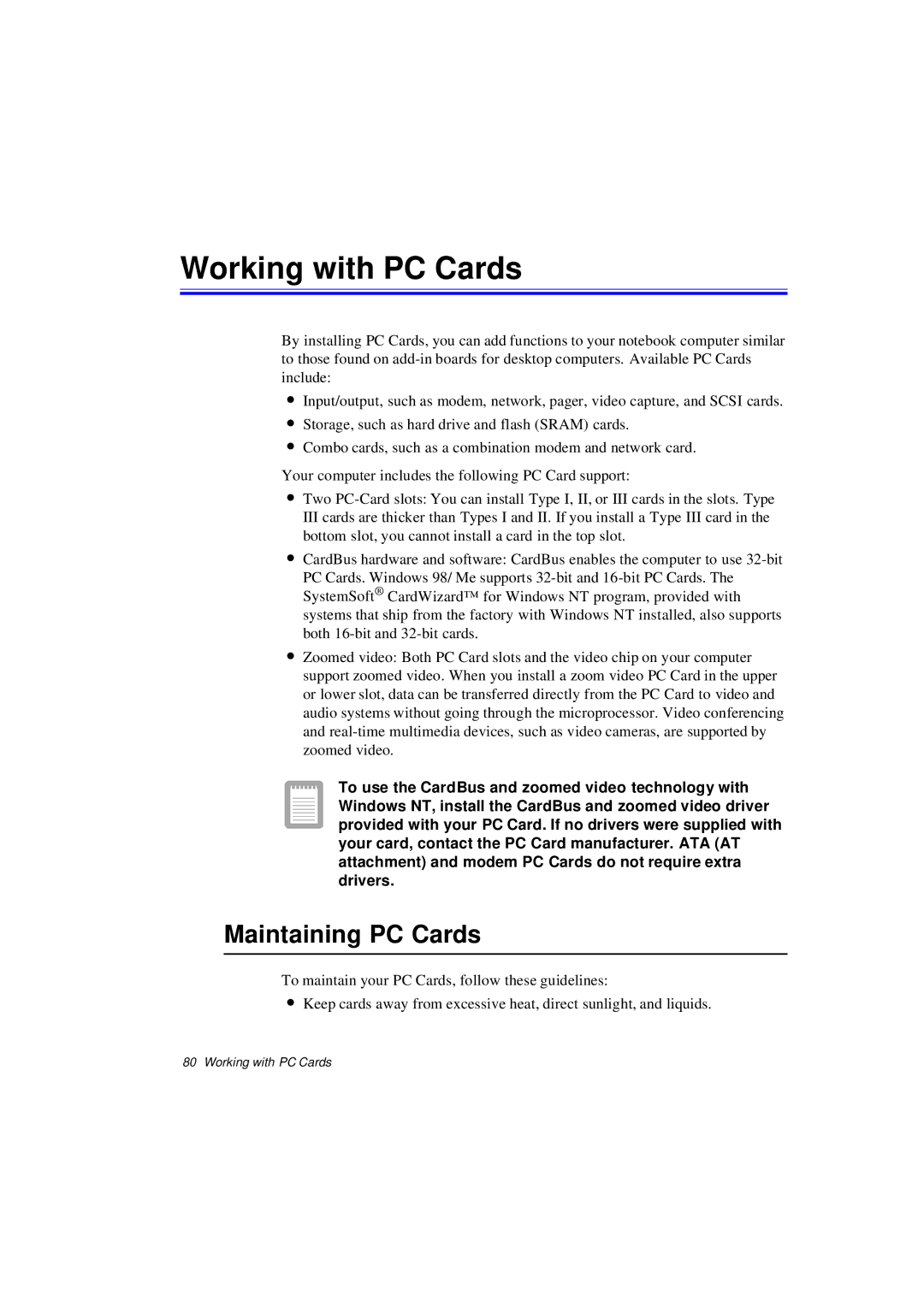
Working with PC Cards
By installing PC Cards, you can add functions to your notebook computer similar to those found on
•Input/output, such as modem, network, pager, video capture, and SCSI cards.
•Storage, such as hard drive and flash (SRAM) cards.
•Combo cards, such as a combination modem and network card.
Your computer includes the following PC Card support:
•Two
•CardBus hardware and software: CardBus enables the computer to use
PC Cards. Windows 98/ Me supports
systems that ship from the factory with Windows NT installed, also supports both
•Zoomed video: Both PC Card slots and the video chip on your computer support zoomed video. When you install a zoom video PC Card in the upper or lower slot, data can be transferred directly from the PC Card to video and audio systems without going through the microprocessor. Video conferencing and
To use the CardBus and zoomed video technology with Windows NT, install the CardBus and zoomed video driver provided with your PC Card. If no drivers were supplied with your card, contact the PC Card manufacturer. ATA (AT attachment) and modem PC Cards do not require extra drivers.
Maintaining PC Cards
To maintain your PC Cards, follow these guidelines:
•Keep cards away from excessive heat, direct sunlight, and liquids.
80 Working with PC Cards
